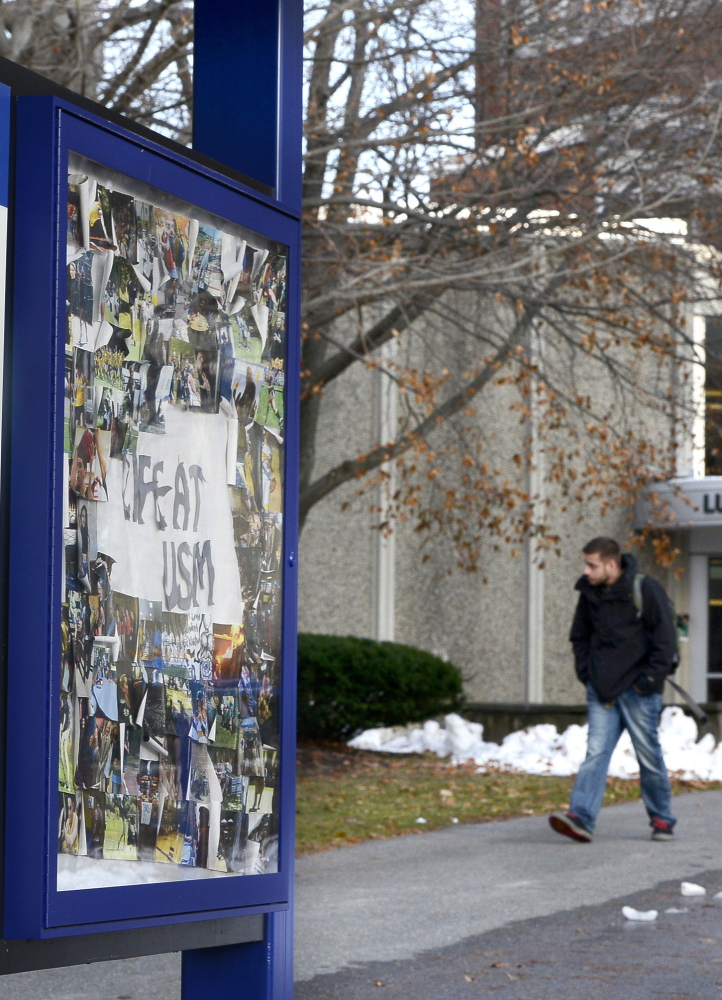Higher education in the United States is in the midst of its greatest period of change since college enrollments exploded after World War II, as a result of the GI Bill; And the University of Southern Maine is not exempt from the current turmoil.
Only this time the pressure isn’t coming from expansion of its student base but from shrinkage, driven by the nation’s declining number of traditional students; competition from private sources and new teaching methods like online and distance education; and the burdensome cost of college education that has outstripped any measure of broader price shifts over the past two decades.
USM has to change to meet these new challenges. That’s why it is now undergoing strategic re-purposing and restructuring to become Maine’s Metropolitan University.
PRECEDENT FOR MAKING A CHANGE
For the past six months, we have worked with a group of faculty, staff, students and community members to begin the process of change and action. We believe this transition will not be achieved without sharpening the identity of USM, re-focusing its organizational culture and returning it to its historic roots as an extension of community needs and aspirations.
USM will need to re-invent itself as a community-based institution of higher education, one that invites and welcomes the community onto campus and extends its classrooms, scholarship, creation, and related activities into the community through mutually beneficial and enduring partnerships.
The story of Fresno State University in California – one of many such universities we have studied – is a good window into what such a partnership could mean in Maine.
Historically partnered with its agricultural community, Fresno State had become viewed as an elitist institution, out of touch with the lives of the city’s people and the issues affecting their lives.
But then the university changed its focus. It engaged with the mayor and the city’s Downtown and Community Revitalization Department to tackle blight in the city, especially in the adjacent Lowell neighborhood. Faculty developed curricula for students through specific projects, internships, and service-learning that included the departments of engineering, public administration, psychology, art, theater, social work, construction management, and real estate finance.
For Fresno State, re-engagement with the community represented a return to its roots and restored its local credibility and sustainability.
chance to address public challenges
From our best-practices research we have learned there are a host of successful models for the engaged university, each adapted in its own way to its unique capacities and circumstances.
As Maine’s Metropolitan University, USM is at the beginning of an organizational learning process for which there is no fixed formula.
However, careful analysis reveals that metropolitan universities, of which there are some 100 across the nation, share a systematic and abiding commitment to engaged teaching, learning, scholarship, creation, and service.
They are institutions characterized by two things: the conviction that they have the skills and resources to engage their communities and build partnerships to address critical public challenges, and the alignment of their mission with leadership, branding and marketing and budgetary support. The mission drives choices regarding infrastructure, faculty and staff development, recognitions and awards, and strategic plans.
Maine’s Metropolitan University will, then, be what we shall together make of it, through community engagements, partnerships, and contributions that advance the public good.
A MISSION AS OLD AS THE UNIVERSITY
The history of USM demonstrates that this role is part of its very constitution. Behind the founding of each school, college, and campus that now comprise USM – including Gorham State College, Portland Junior College, Portland University, and Lewiston-Auburn College, among others – was ambition to create a place of higher learning that would address the needs of a growing community.
This has been the case whether it was in producing the region’s educators, business and community leaders, nurses and lawyers or, more recently, its artists, scientists, musicians, actors, social scientists and social workers.
Each predecessor of this fine institution, in every instance, was created at the request of and in partnership with its community leaders, to serve the growing needs of southern Maine.
It is to these founding principles and partnerships to which USM must now return to advance the prosperity of the region and the success of the university in the 21st century.
We invite its many friends, who depend upon USM and wish it well, to embrace its aims with us.
— Special to the Telegram
Send questions/comments to the editors.


